A “full” row in Tunisian crochet is made of 2 parts: a forward pass (FwdP) and a return pass (RetP). So a short row in Tunisian crochet can be a short forward and/or return pass. It all depends on the shape you want to create.
In this article, I’m showing you 4 different types of short forward passes. Short return passes are presented in a different article to keep documentation as structured as possible. There is so much to say about short rows.
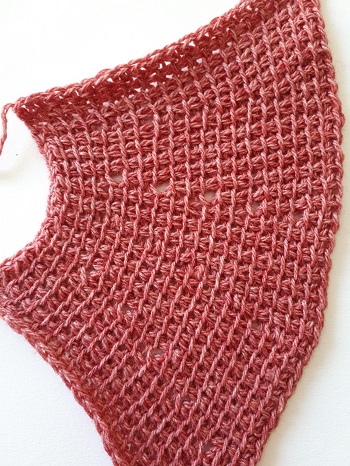
Think about the type of yarn you use
The purpose of this article is to document 4 different ways to crochet short forward passes. I made 2 different swatches, both in Tunisian simple stitches. They are identical. Short forward passes are in the exact same order in both samples. But I used 2 different types of yarn: on the one hand 100% wool, on the other hand a blend of wool and coton, a much thinner yarn.
I only keep the photos made with the sample in thin yarn because they show more details. But I want to mention that the fabric you get, how it looks like, is closely linked to the type of yarn you use. Take this into account when you crochet short rows in your Tunisian crochet projects. In other words, don’t discard a technique simply because it does not work well with the type of yarn you are using. Keep this technique in mind and give it a try in another project with another yarn later.

What is a short forward pass?
A short forward pass in Tunisian crochet is “just” a shorter forward pass than the row before. It’s a partial row that ends before you have picked up loops in all the stitches available in the previous row up to the edge. In other words, in a short forward pass, you pick up a number of loops and you leave the rest of the previous row untouched. Then you start a return pass.
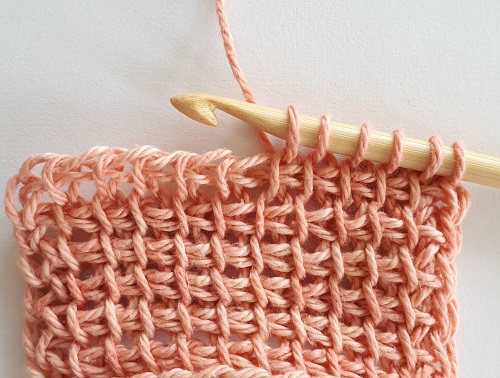
This definition of a short forward pass is true for all the 4 samples presented in this article. You pick up a given number of loops and you forget about the other stitches from the previous row.
The difference between the 4 samples presented here lies in 2 main decisions you take after you have completed the short forward pass:
- You start a return pass with or without a chain 1 (step in yellow in the graph below).
- You insert your hook under 1 or 2 loops to pick up a loop in the short FwdP edge stitch (in green on the graph).
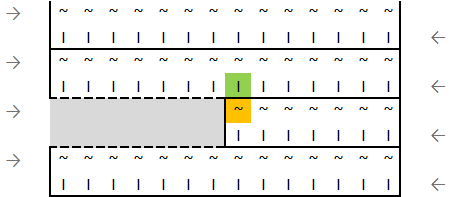
Start the return pass with 1 chain
One option is to start the return pass after the short forward pass with a chain. You simply yarn over and pull through 1 loop. I’m tempted to say it’s the “standard” return pass.
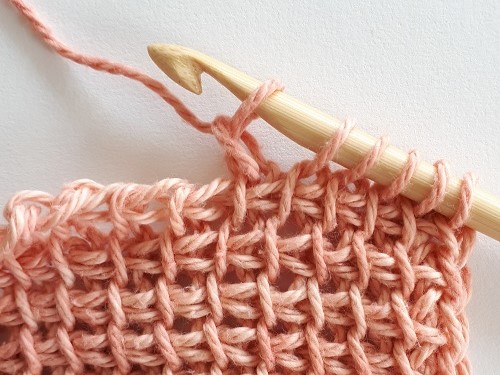
Note: The Tunisian crochet row is shorter only because the forward pass is short compared to the previous rows. However, the return pass is not short since you close all the loops picked up on the forward pass until there is only 1 loop left on hook. The “full” row (forward + return) is shorter, right. But, in this specific example, this is only due to the short forward pass.
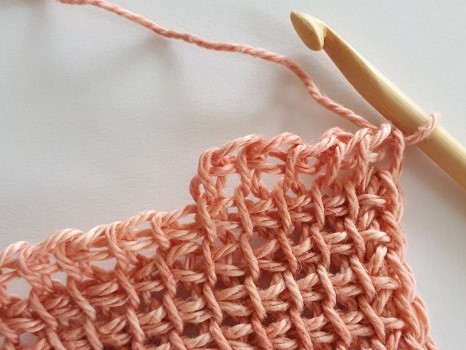
Crocheting the edge stitch
Now, if the following forward pass is longer than the previous short forward pass, we need to consider how to pick up a loop in the final stitch of the short forward pass. Have a good look at the 2 threads in the final loop of the short forward pass (blue and yellow). There are many possible options to work the slope between the short forward pass and the stitches from the previous row. I will limit this article to 2 different options.
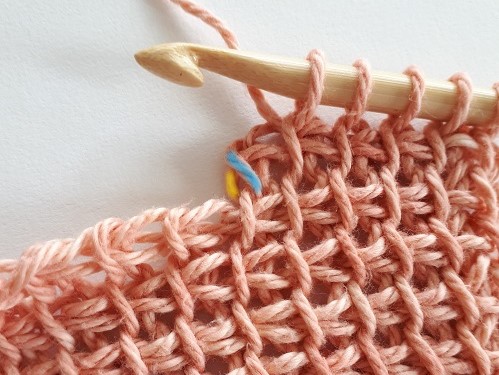
Option 1: you pick up a loop by inserting your hook under the front thread only (in blue). Then you simply pick up loops in the stitches from the previous row created before the short forward pass. It’s that simple.
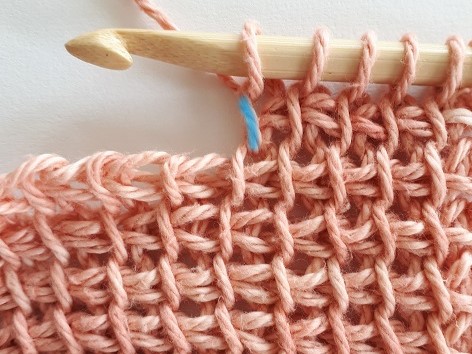
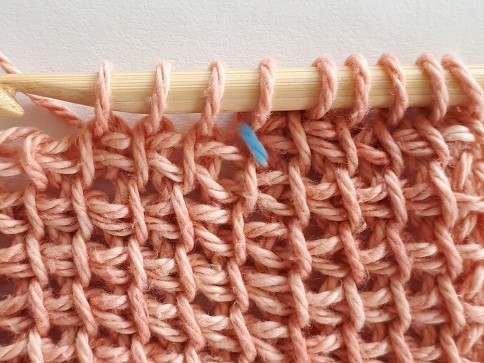
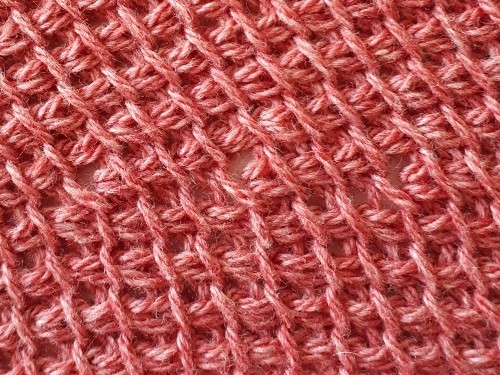
Option 2: you pick up a loop by inserting your hook under both threads on the side of the short FwdP edge stitch. Then, just like in option 1, you pick up loops in the stitches left unworked in the row made before the short FwdP.
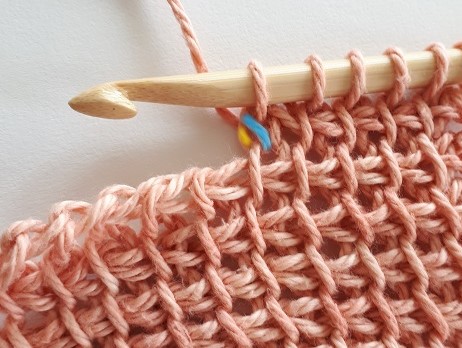
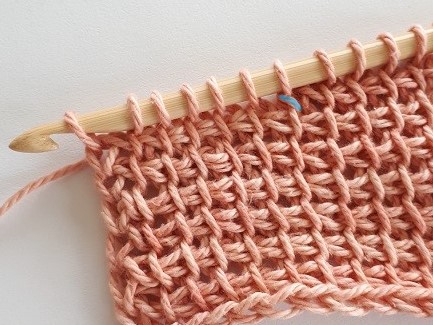
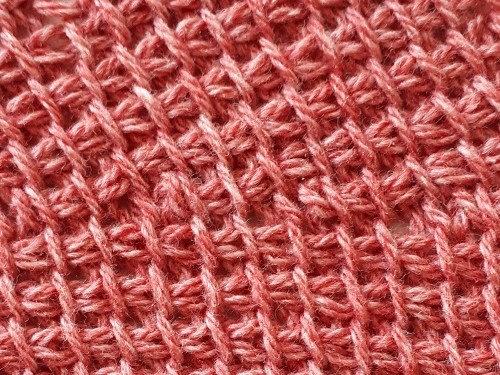
No chain when starting the return pass
Now consider you don’t make any chain at the start of the return pass after the short forward pass. You simply yarn over and pull yarn through 2 loops, right from the start. You are not making a decrease! These 2 loops closed together remain independent from each other and you’ll pick up a loop in each of them. The difference is that there is no chain in between them.
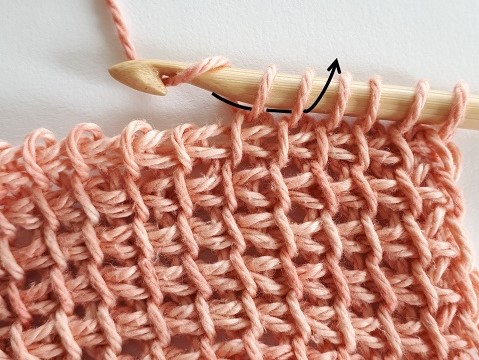
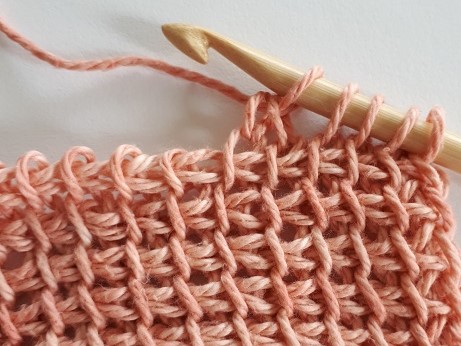
When working the following forward pass, spot the 2 threads in the final stitch of the short row. It’s not always easy to see them, but they are there! Just like in the previous option, you can choose to pick up a loop by inserting your hook under 1 or both threads.
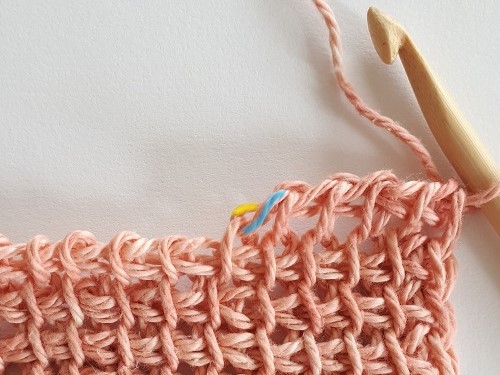
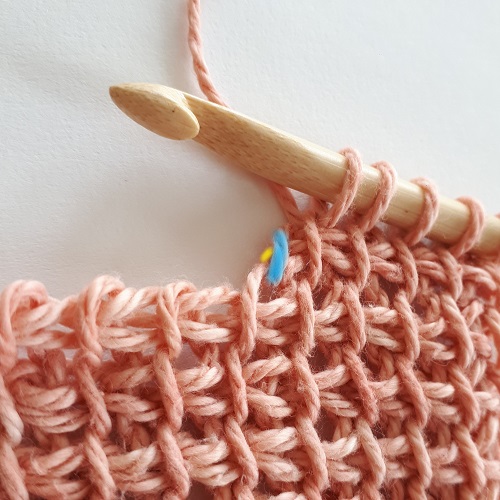
Option 1: You insert your hook under the front thread only (in blue). Yarn over and pull up a loop. You end up with a “hole”, more or less obvious depending on the type of yarn you use. These holes make interesting design elements in some projects.
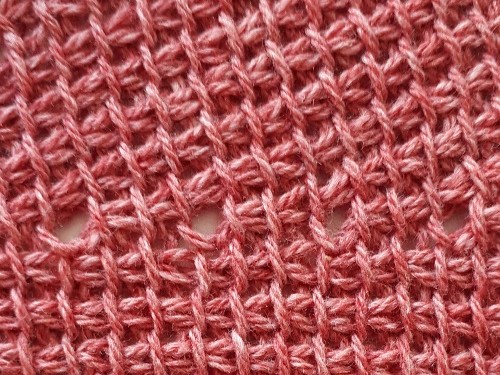
Option 2: You pick up a loop by inserting the hook under both threads (blue and yellow) on the side of the edge stitch. That’s the option I use most of the time in my projects. I like it because it’s neat and discreet with most (but not all) yarns.
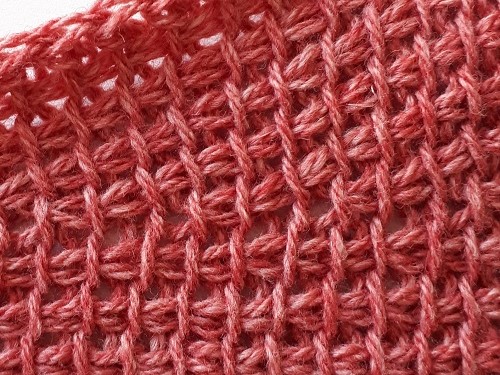
Conclusion
That’s it for today. There are many more things to say about Tunisian short rows. I have just shared 4 samples. Keep in mind that there is no “right” or “wrong” way to make short rows. Results can be different depending on the technique you choose, but also depending on the type of yarn you use and the type of project you plan to make.
I have posted a short video on my YouTube channel. It’s in French. Photo tutorials are great. Videos are sometimes more helpful.
Don’t hesitate to share your comments. Do you use short rows in your Tunisian crochet projects? Oh, and if you have questions, just ask. We think better together.
